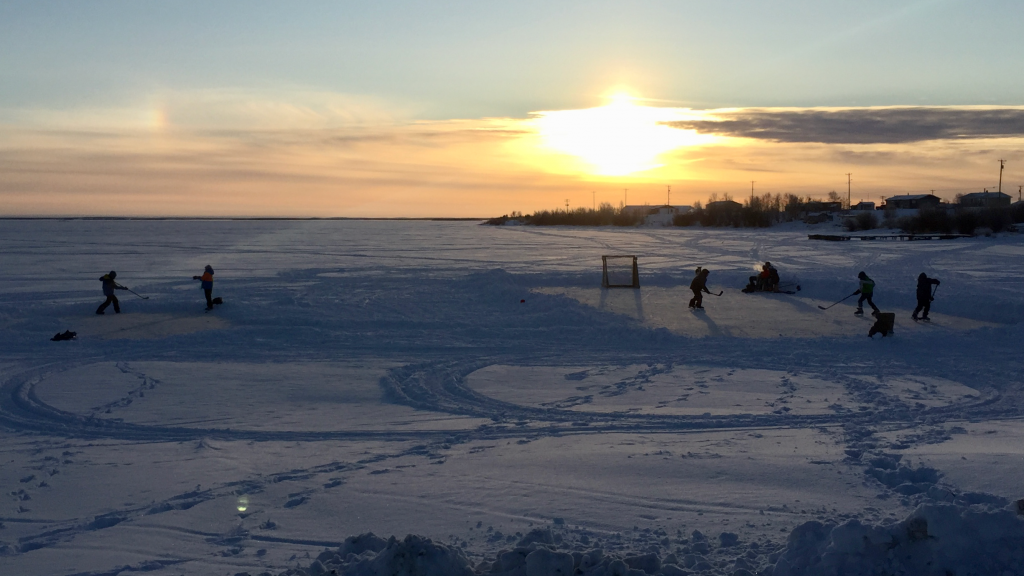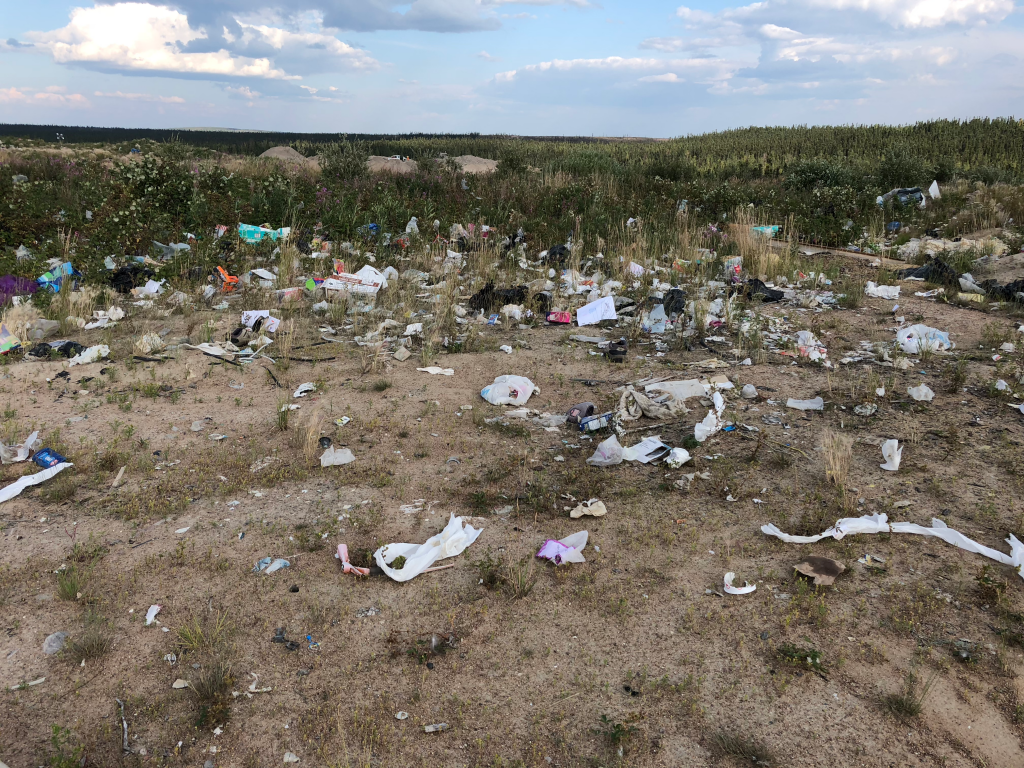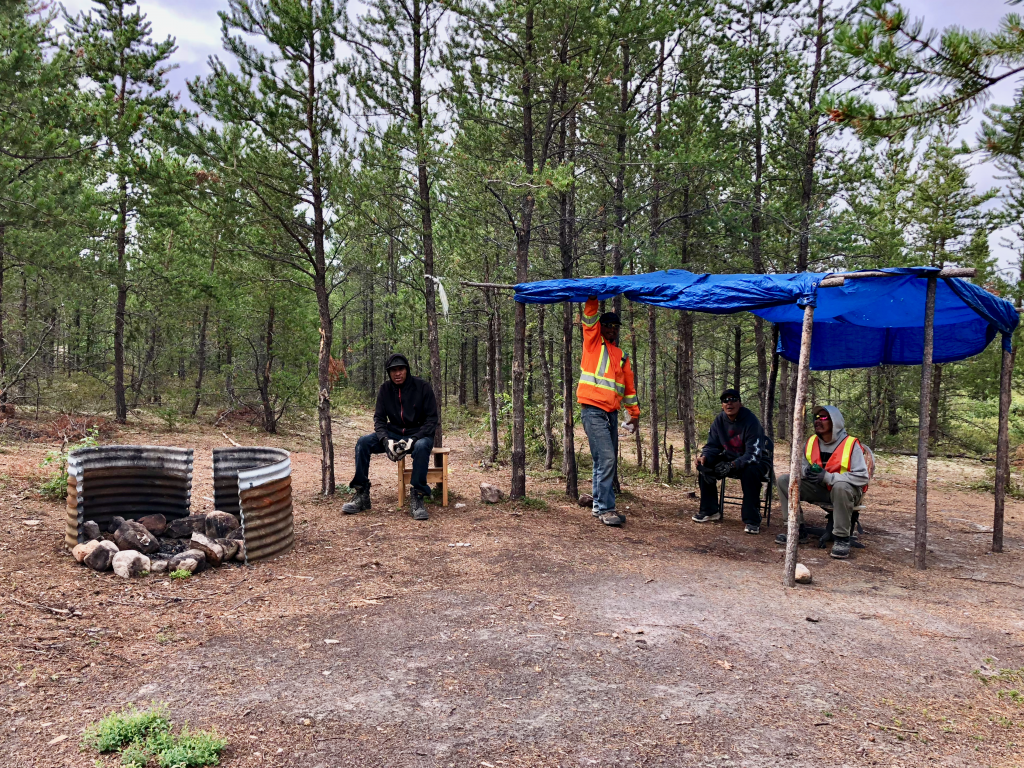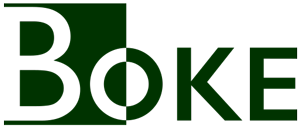Click here to access the full Northlands Dënesųłiné First Nation Waste & Recycling Initiative DRAFT Report & Plan.
In 2016, after extensive consultation and discussion among its leadership and community members, Northlands Dënesųłiné First Nation (NDFN) published a Sustainable Development Strategy[1].
Recycling and waste management to date
The Northlands Dënesųłiné First Nation (NDFN) has a little over 1,100 members. Its main community is situated on reserve land on the north shore of Lac Brochet and has approximately 1,000 residents.
Most of the waste generated by this community is transported to a waste collection area on provincial Crown Land approximately 2 km north of reserve land. Before the start of this project, there was not a systematic or comprehensive approach to recycling in the community. There is no consistent system for how people make their trash available for collection and there are no standardized residential collection containers.

Derelict Heavy Equipment Area
Approximately 30 derelict heavy vehicles are located on reserve area in a field just south of the community adjacent to the Band’s Public Works Garage. With the recent increase in capital and infrastructure projects in the community, some effort has been made to clean up this area.
Current Waste Collection Area
Some improvements were made to this area during the current project, but more remains to be done.
The primary problems with the Current Waste Collection Area prior to the start of this project included:
- Unrestricted public access
- No set hours
- No fencing
- No gate
- No signage informing residents of appropriate dumping areas
- No separation of recyclables from the general waste stream
- Neither organic nor inorganic recyclables are separated
- Frequent, uncontrolled burning of household waste
- No Burn Cage
- Burning not conducted by trained personnel
- Ongoing risk of forest fires
- Deposited waste is not covered
- Winds blow lighter pieces of waste into surrounding areas
- Waste is spread out over wide area
- Waste is often mixed with sand and gravel, resulting in low density of garbage
- Waste has blown into a former quarry near the Active Dumping Area
Although there a number of waste and recycling challenges in Northlands Dënesųłiné, there are strong reasons for optimism.

- Proper management of waste—and a robust recycling program—are priorities in the Sustainable Development Strategy.
- There are no derelict vehicles around the homes or along the side of roads in Northlands.
- In an average year, roads and paths within the community have only a small amount of litter.
Current Project
This project was initiated in Summer 2017 by NDFN Chief and Council in discussions with members of the Boke Consulting team, as a means of implementing the priorities and strategies for waste in the Sustainable Development Strategy.
An application was made in 2017 and funding was committed by Indigenous Services Canada.
Work on the ground began with recruiting a Cleanup Crew. Community members were invited to sign up to join a Cleanup Crew. Any community member currently on Income Assistance was eligible to join the Crew.
All were trained on the basics of safe work and separating recyclables. The Cleanup Crew began by working their way systematically through the community, cleaning up litter and other small waste items.

The Plan
AREA OF FOCUS | YEAR 1 | YEAR 2 | YEAR 3 | YEAR 4 |
Reducing and reusing | develop school curriculum | work with Northern Store to reduce packaging | open swap “store” | review & improve |
Staffing and governance | choose staff; begin operations; begin training | continue operations & training; supplement staff with WOP participants & summer students; develop mandate & governance | ||
Managing external agreements | secure agreements | prepare & ship materials; review agreements annually | ||
Creating recycling & waste boxes and stations | set up Recycling Depot & Transfer Station | build & distribute household boxes | repair & replace community & household boxes, as needed | |
Bringing WMF into compliance | sub-cells | build fence & sub-cell separators | sub-cell capping | review operations with governments |
Implementing comprehensive collection & waste management system | choose, purchase and ship equipment & supplies | begin in-vessel composting; begin using recycling shuttle | repair or take apart derelict buildings | review waste & recycling collection & management |
Cleaning up waste backlog | set up vehicle decommissioning | vehicle, equipment and appliance decommissioning, staging and shipping | ||
Monitoring current and legacy waste sites | choose monitoring company | take & send samples for analysis annually | ||
